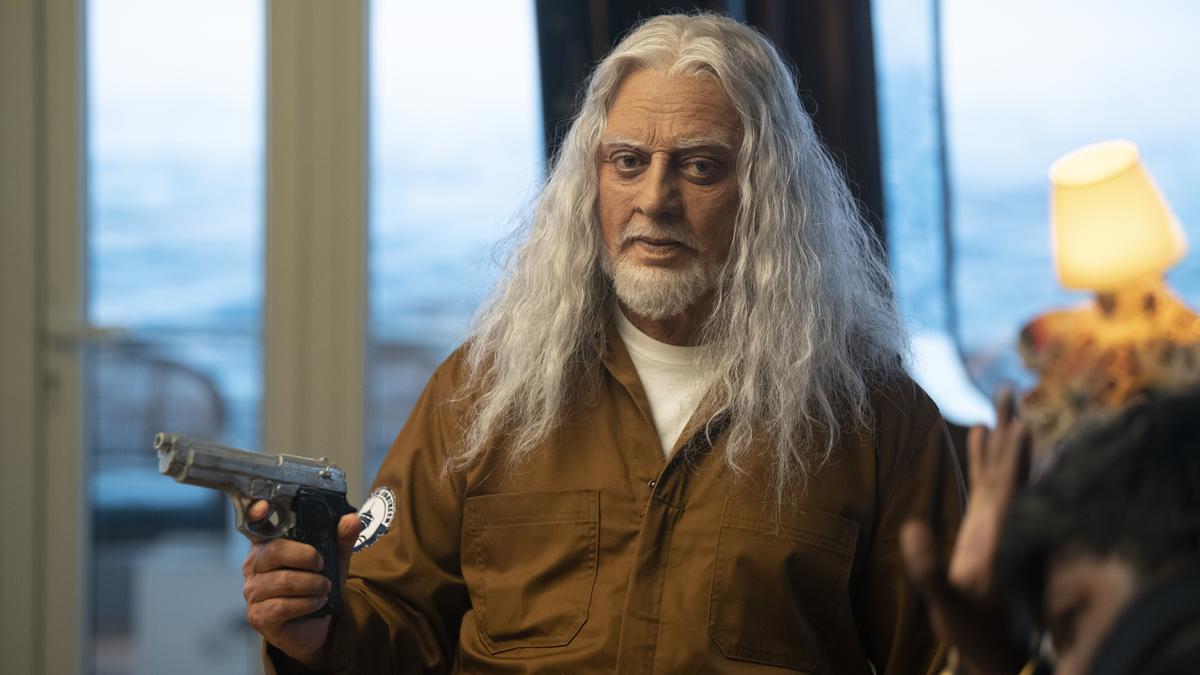
Kamal Haasan’s ‘Indian 2’ | What could Indian thaatha do in present-day India?
The Hindu
Going by the discourse around ‘Indian’ in the last 30 years or so, one perhaps expects that the issue of corruption in India is painted in a much more nuanced and holistic manner in Shankar-Kamal Haasan’s ‘Indian 2’
The humongous success of the 1996 Tamil blockbuster, Indian, starring Kamal Haasan and directed by Shankar, could be attributed to a number of reasons, such as Kamal Haasan’s brilliant portrayal of a 70-year-old freedom fighter, exquisite numbers from AR Rahman and Shankar’s imaginative story-telling, but the primary reason was its instant appeal to the ‘common man’, forced to shell out money to government officials on an everyday basis.
The impact of Gentleman, Indian and subsequently several of director Shankar’s films such as Mudhalvan and Anniyan spoke to generations of Tamil people, shaping their understanding of politics and corruption in the society, often privileging problematic vigilantes over systemic, long-drawn-out, incremental reform of the system. Like every movie, Indian was written and made within a specific socio-political context in India. Five years before the film’s release, in 1991, the Indian government had decided to break the locks of the economy by effecting a series of structural reforms that loosened the State’s vice-grip on the economy by adopting liberalisation to kickstart economic growth and provide jobs.
In 1990, the then-Prime Minister VP Singh’s government agreed to provide 27 per cent reservations to Other Backward Classes (OBCs), which resulted in widespread protests against its implementation, spawning debates over whether this would affect the efficiency and quality of personnel in bureaucracy. Of course, India also witnessed the controversial Ram Janmabhoomi movement, which aimed to build a temple for Lord Ram at the site where the Babri Masjid stood. This, a Hindutva project, still in a nascent stage then, was realised by Prime Minister Narendra Modi earlier this year.
The impact of these events had a tremendous impact on the psyche of all Indians, including the fictional ‘Indian’ Senapathy, who was the freedom fighter-turned-murderer of corrupt government officials. For one, he must have started to distrust state control of the Indian economy and other government institutions and view them as citadels of corruption. Two, he seems to have developed a subconscious bias against reservations, which provided a pathway for the OBCs along with SCs and STs to get representation in education and jobs (supported by personal experience of the death of his daughter in the film). And, not to mention, he ends up killing his own son Chandru, a brake inspector in the government, for taking a bribe which results in the death of numerous kids.
If we use these ideological and socio-political frameworks, director Shankar’s earlier film Gentleman, which narrated the story of a non-Brahmin Kicha (the son of a cook working at a government school) who, in order to realise the dreams of students like Ramesh, his poor Brahmin friend unable to secure admission to a medical college due to caste and poverty, decides to rob the rich and powerful to build a college that would admit everyone. 30 years later, it is obvious that Gentleman’s premise hasn’t aged well when we look at how abysmally poor the representation of the OBCs and SCs/STs continues to be in India in every sphere, so much so that it became a rallying cry for the Opposition INDIA bloc in the 2024 Lok Sabha elections.
Desire for vigilante justice
There is a perceptive interview of Kamal Haasan from the 1990s, in which he speaks about the ideological issues he had with Gentleman and Indian that still rings true. With respect to Gentleman, he says he was not too keen to do the film because the original idea dealt with the militancy of a Brahmin kid, and with Indian, he acknowledges that though a man who kills the corrupt and instils fear in them is a dream of every ‘common’ man, the narrative promotes ‘fascism’ by erecting a ‘freedom fighter and an uncompromising’ old man, who kills the corrupt officials as the solution.













